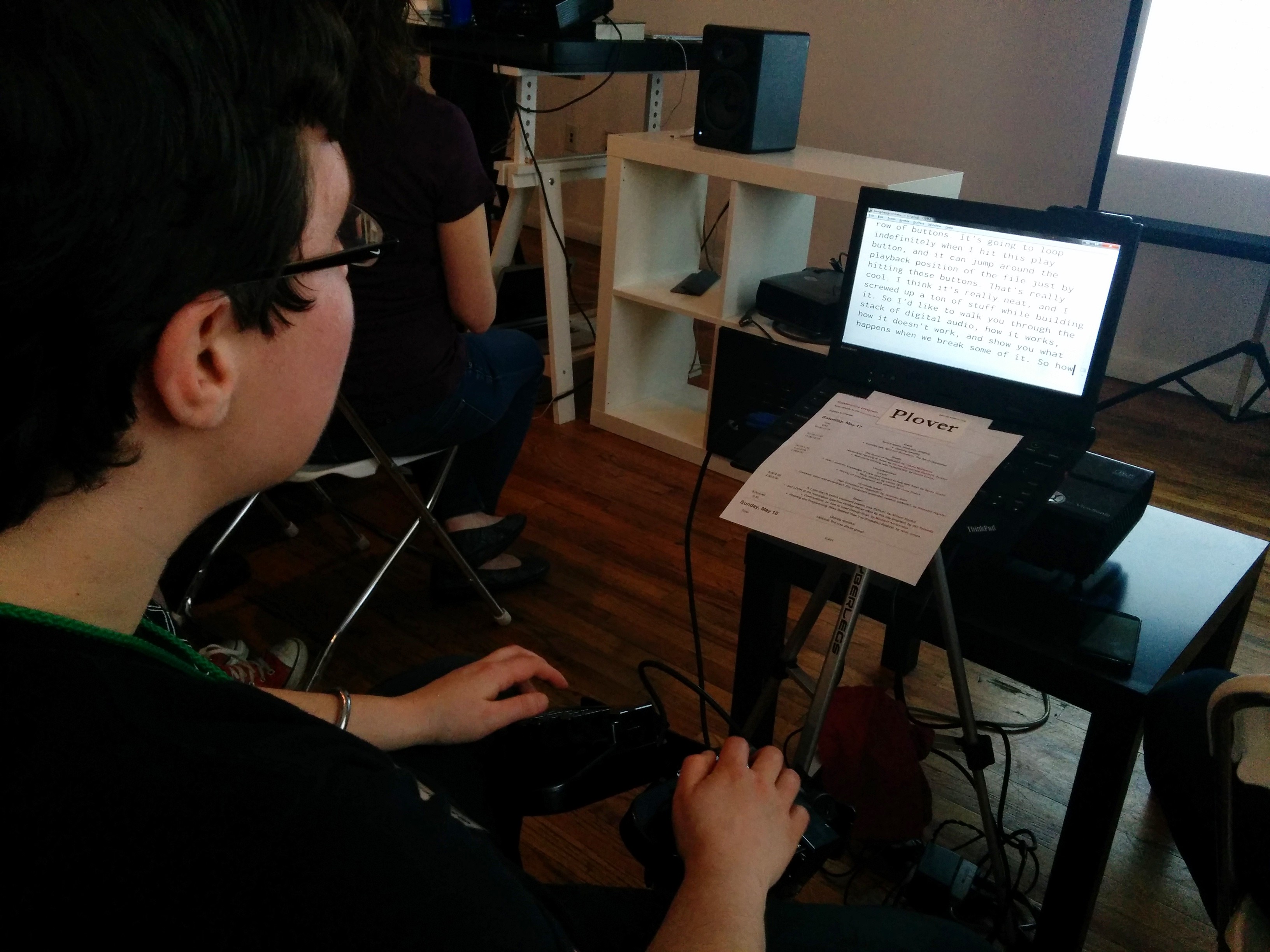Your next conference should have real-time captioning
I was one of the organizers of !!Con, a free conference about the joy, excitement and surprise of programming that happened two weeks ago in New York.
We did a number of things that I think helped set the conference apart – for instance, we had an anonymous talk review process. But one thing we did that I’m particularly glad of was having real-time captioning of the talks at the conference. As each presenter spoke, Mirabai Knight transcribed the text of their talk on her steno machine, in real time, at up to 260 words per minute, and projected it on a screen that the whole room could see.

Why did we do this? In addition to “because it was awesome”, I mean?
It first occurred to us that we’d want real-time transcription at !!Con when, about a month before the conference, we learned that one of our speakers, Darius Bacon, had unfortunately lost one of his hearing aids. We knew that Darius probably wouldn’t be able to enjoy the other talks unless we did something.
I had known about Mirabai and her work from this 2010 interview with her on the Geek Feminism blog, in which she discusses how she got involved in real-time transcription for the deaf and hard of hearing and how that led to Plover, the open source steno engine that she helped create. It was pure luck that Mirabai lives in New York and was able to attend !!Con in person (although she can do transcription remotely as well). One of the !!Con sponsors, Venmo, agreed to pay her very reasonable hourly rate, and we were all set. I was delighted, since I’d been hoping that Mirabai would be at the conference one way or another, anyway.
Was it worth it? No question about it. Darius said that having real-time captioning made !!Con “by far the best” conference he’d ever been to:
Their hiring @stenoknight made it by far the best con I've attended; I hardly ever bother going to conferences.
— abecedarius (@abecedarius) May 18, 2014But it wasn’t just Darius who was helped. As Mirabai points out on her website:
When an event needs to be made inclusive, projecting the CART display for the benefit of the entire room can be the best way to provide universal access for Deaf, late deafened, and hard of hearing people, as well as people who might have some degree of hearing loss but who don’t self-identify as hard of hearing or deaf. CART is also useful for English language learners and people with dyslexia, auditory processing disorder, or ADHD. When the CART display is available to every audience member, no one has to feel singled out or as if they’re demanding special privileges. Everyone benefits.
And the !!Con attendees agreed:
@abecedarius @stenoknight for serious. This is how everything should be done.
— Andreas E-Fuchs (@antifuchs) May 18, 2014Props to whoever decided to live caption #bangbangcon. More please! #accesibility #nyc
— Christopher Edwards (@xtopher1974) May 18, 2014People who @stenoknight made !!Con more understandable for
- deaf people
- english second language
- people who missed something
- everyone!
— Julia Evans (@b0rk) May 21, 2014As if all that weren’t reason enough to have live transcription at a conference, just having Mirabai around made !!Con much better because stenography is fascinating. During the breaks, Mirabai demoed her software a bunch of times and even let people try out her steno machine, which was a huge hit. I don’t think there was any time during the conference when she wasn’t surrounded by a crowd of curious people wanting to learn how steno works.
Anyone at #bangbangcon is welcome to come play with my steno machine and get a crash course in @plover during breaks or lunch! #steno #a11y
— Mirabai Knight, CCP (@stenoknight) May 17, 2014Among the coolest things seen at @bangbangcon: open source steno! http://t.co/Qq9NFmntad
— Ricardo Signes (@rjbs) May 18, 2014@stenoknight Love talking with you as well. Demystified stenography for me.
— Guillaume Marceau (@gmarceau) May 19, 2014@stenoknight I read through the arduino firmware this morning! I am VERY INTERESTED.
— ghost logic analyzer (@silentbicycle) May 19, 2014Also I suggested to the person doing the stenography at @bangbangcon that they were a compiler and after some hesitation they agreed
— mrb (@mrb_bk) May 18, 2014Finally, having real-time transcription was great because it means we now have a written record of all the talks from the conference. We did some light editing of the transcripts to clean them up, but for the most part, the files are exactly as they came from Mirabai. She’s that good! (That said, if you see a mistake in one of the transcripts, feel free to file a pull request to fix it.)
We’re so glad we did this. If you’re a conference organizer, your next conference should have real-time transcription. (And you can hire Mirabai to do it; if she’s not available, she may be able to recommend someone else!) It’s a small investment that will make your conference better for everyone.

Comments